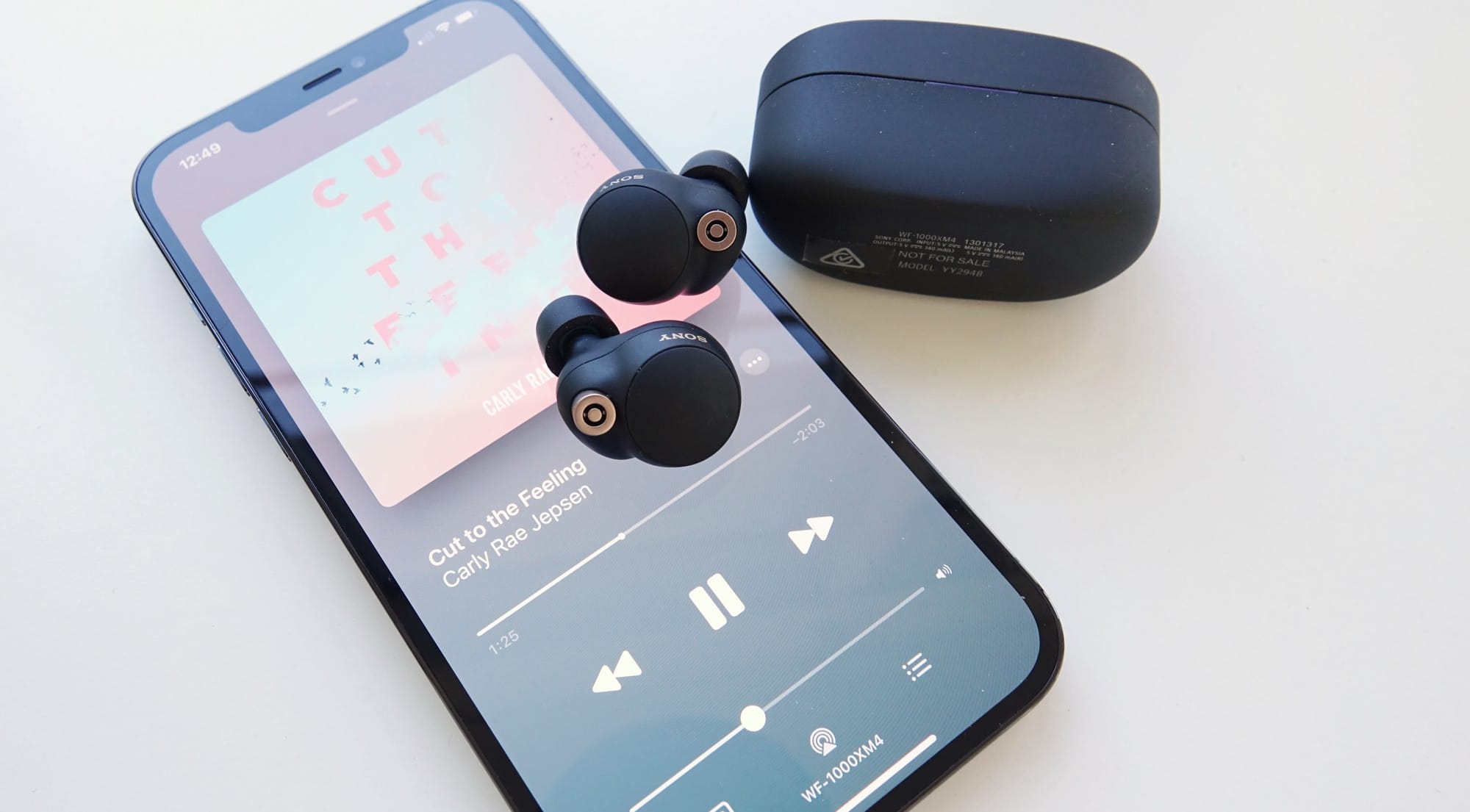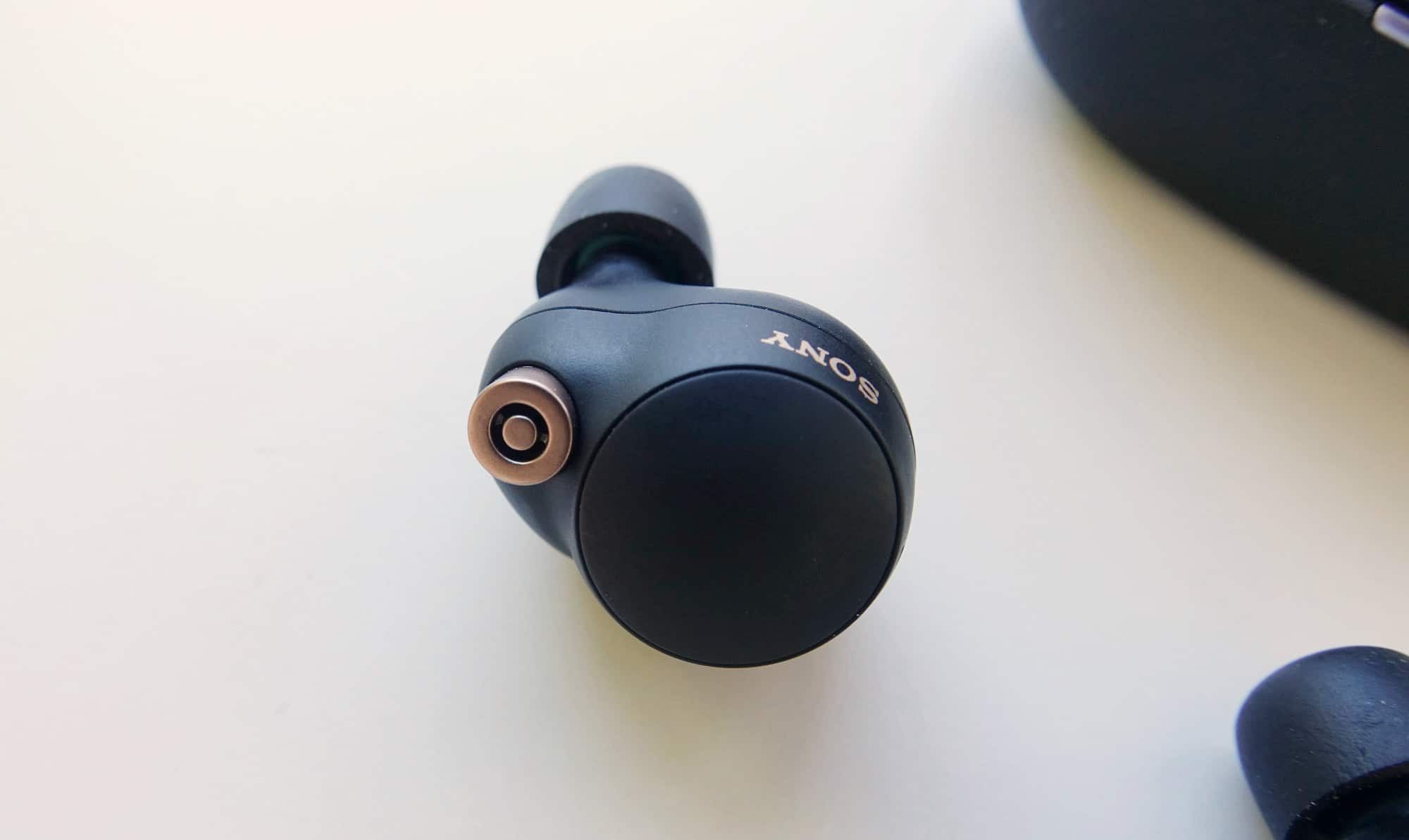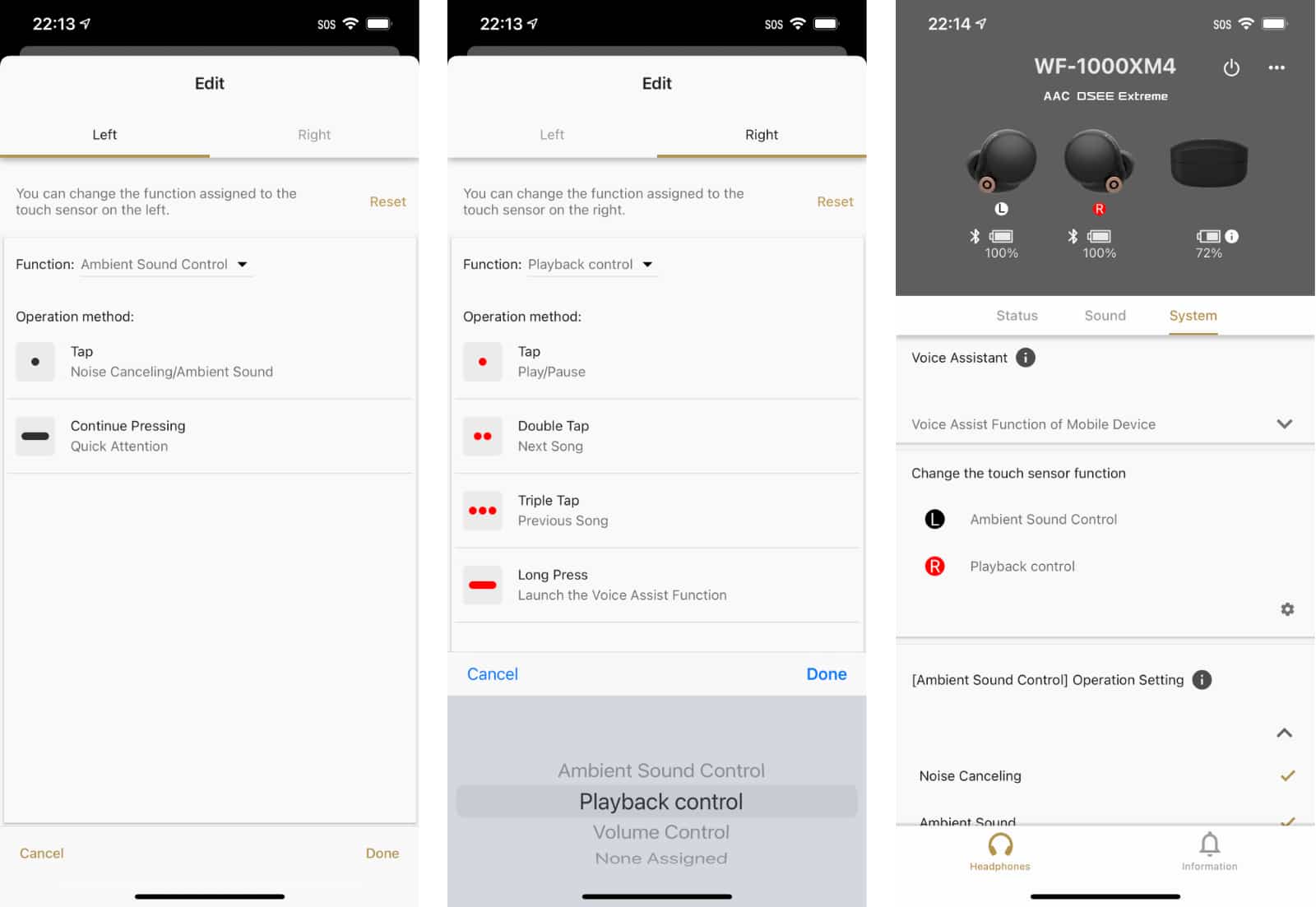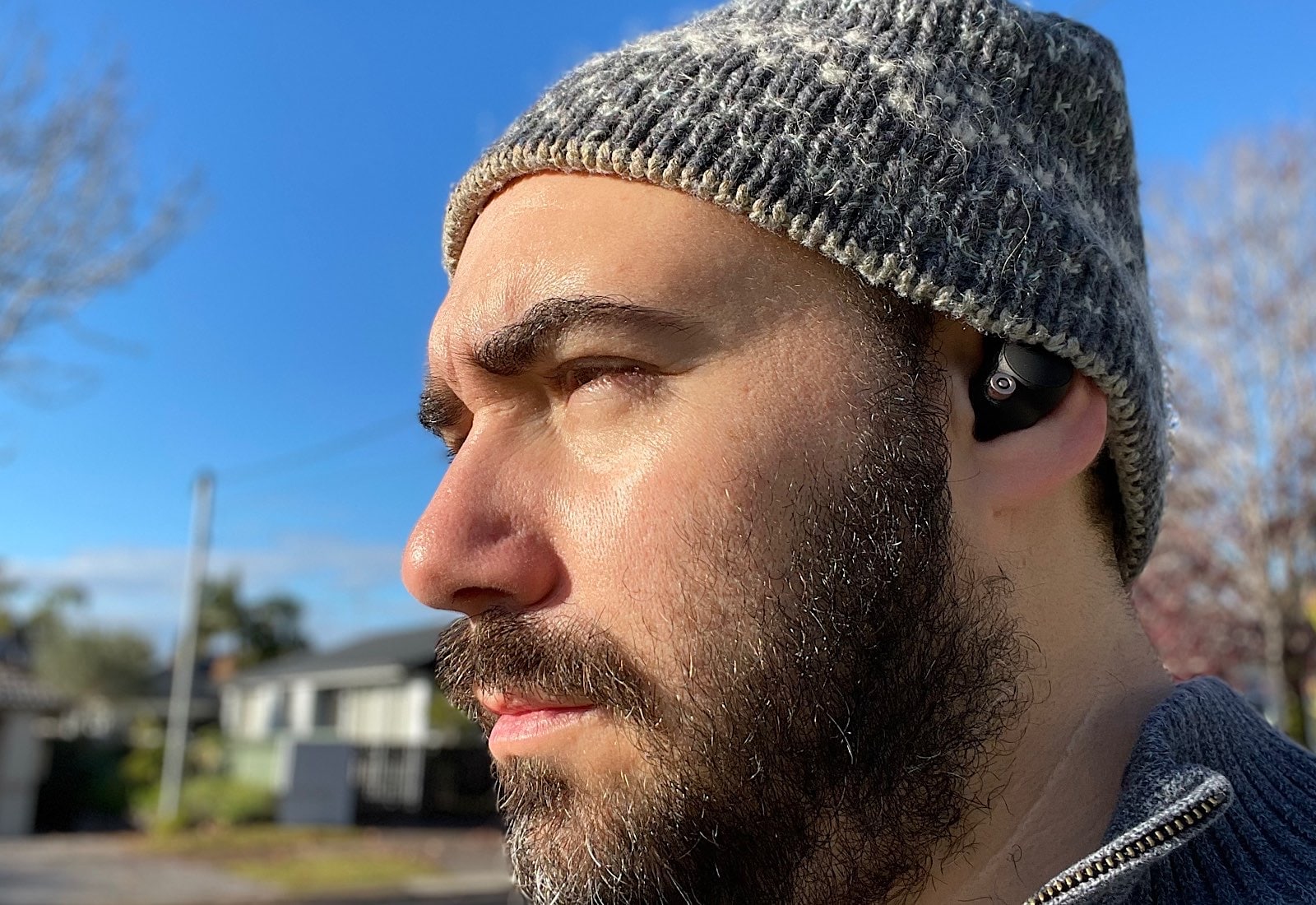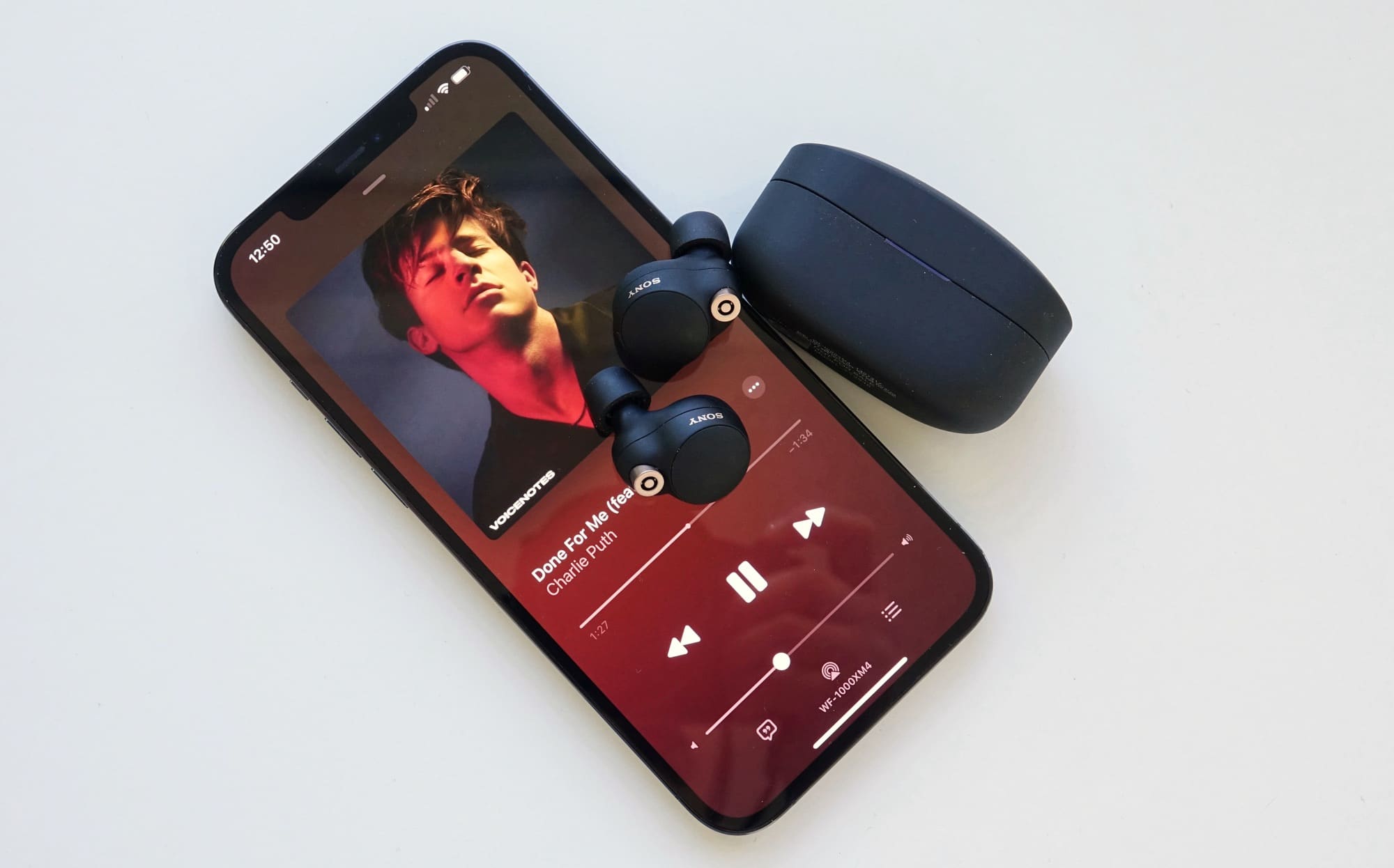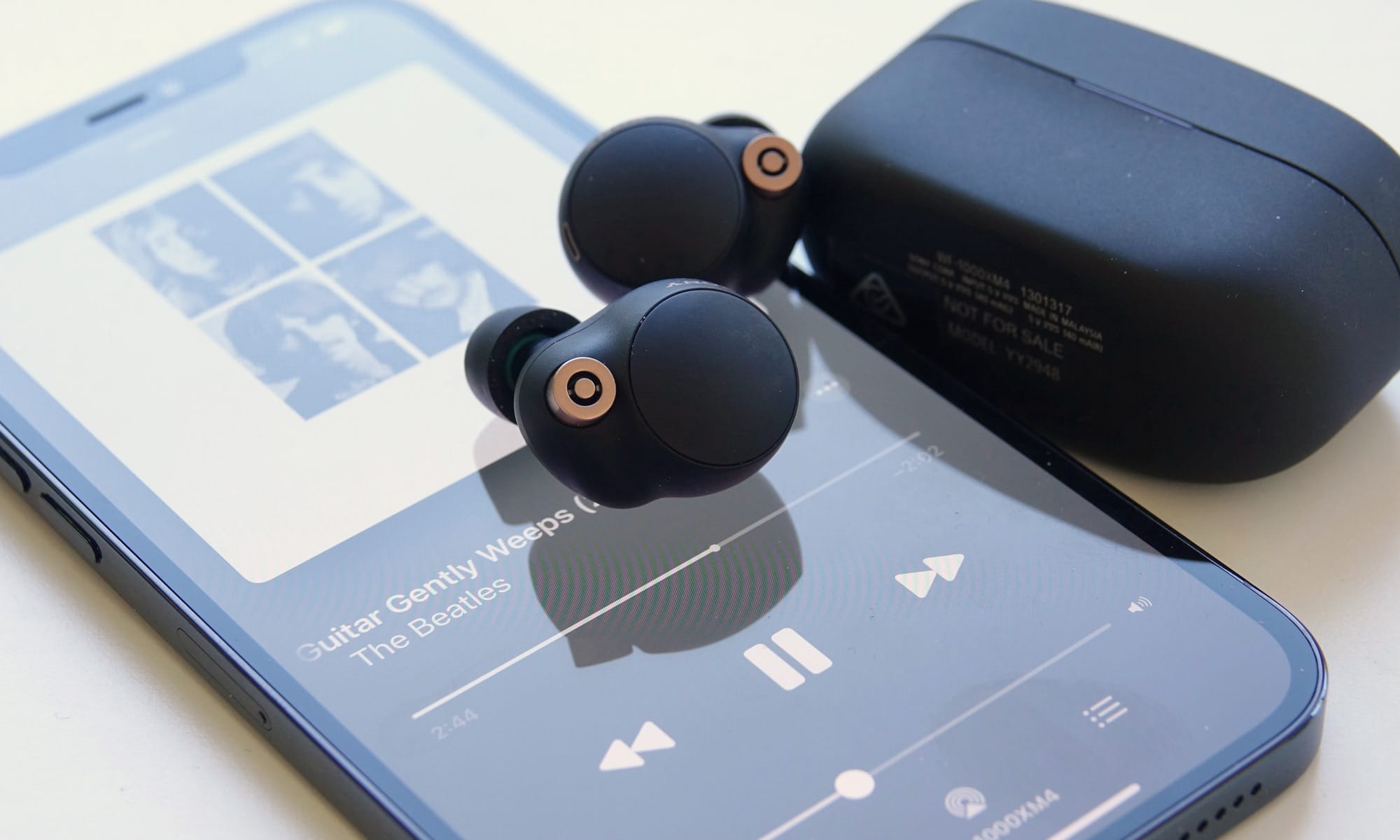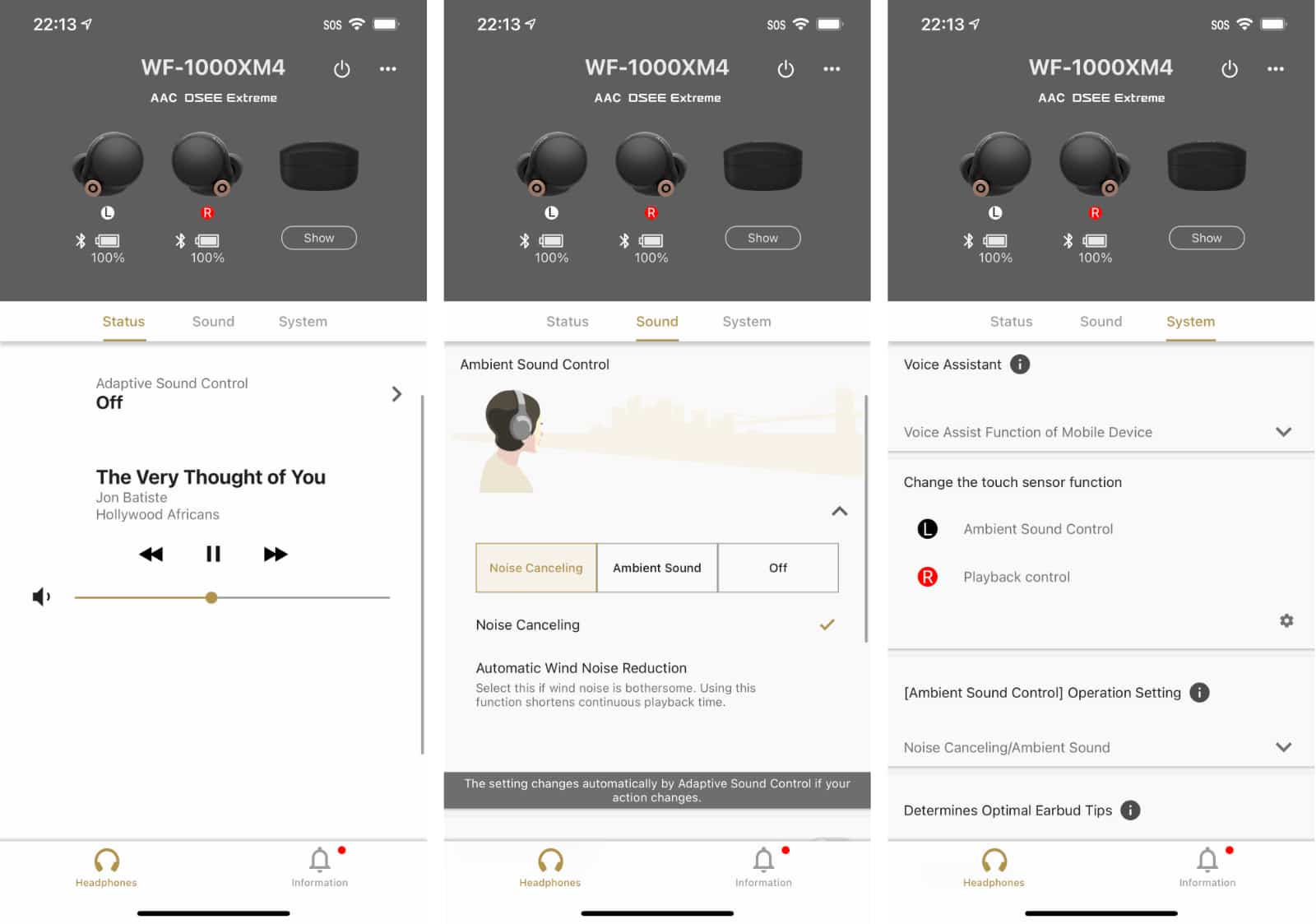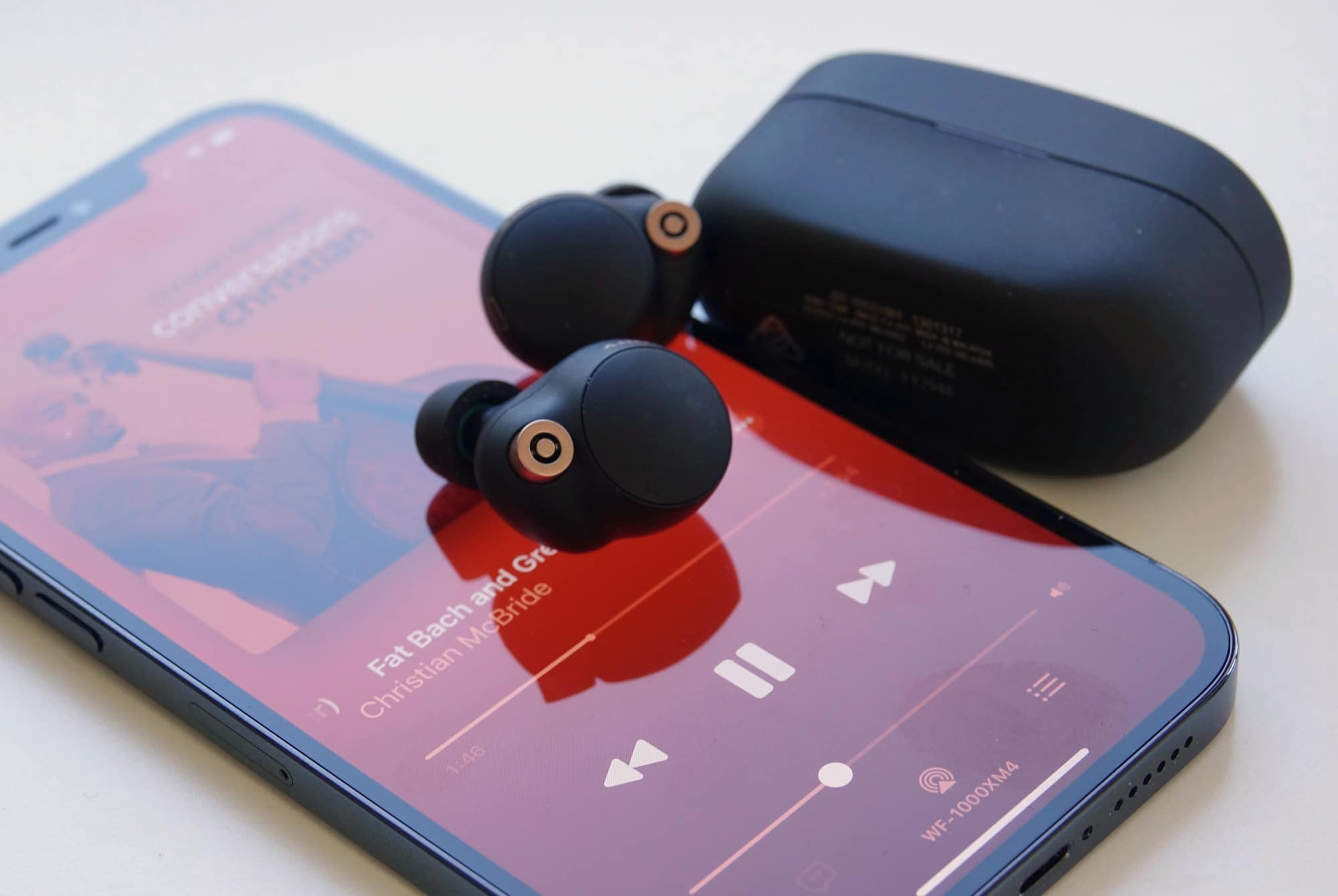Quick review
The good
The not-so-good
The truly wireless noise canceling earphone market offers steep competition, but the best are back with more features and a new design. Are the Sony WF-1000XM4 the new in-ear benchmark?
It’s been two years since we saw Sony show us how a pair of wireless in-ear noise canceling earphones could be made, and two years since we had a new benchmark.
While we’ve seen numerous truly wireless noise cancelling earphones in that time — from the Apple AirPods Pro to the Oppo Enco W51 to the Bose QC Earbuds, the Jabra Elite 85t, and many others — Sony’s XM3 remained the benchmark, winning our best earphone for 2019 and holding on in our 2020 best tech roundup.
And so now we’re here for an update, as Sony announces a new model, the WF-1000XM4. Priced at $449.95 in Australia, it’s clear Sony has high expectations for the follow-up, and we can totally understand why. Are these the new best?
Design and features
Modelled from the technology Sony used in the WH-1000XM4 last year, the Sony WF-1000XM4 shrinks the hardware down so you don’t have to wear them over your ears, but rather inside of them.
As such, the WF XM4 follow the template set by Sony’s headphones and shrink it down to a truly wireless design like the WF XM3 did before them.
You’ll find a new 6mm driver on each side of the earphones, and a new chip to process the audio, too. That chip is Sony’s “Integrated Processor V1”, an evolution on the QN1e chip before it, which Sony says uses less power and yet also handles noise cancellation better. You’ll also find support for Sony’s sound upscaling technology there, the Digital Sound Enhancement Engine “DSEE Extreme”, a feature you can turn on and off in the app.
Like the bigger headphones, support for Adaptive Sound is in the package, meaning you can register locations using the GPS in your phone to where various cancelling modes will trigger. You have a choice between full noise cancellation and 19 degrees of ambient transparency mode, so if you like to listen to a bit of the outside world while you’re at the coffee shop, you can set that, while work can see your ears dead to the world.
Sony has also changed the tips, supporting a new material that is a combination of memory foam and silicone, which is basically a malleable silicone. It’s more like foam when you feel it, and we suspect Sony has gone this way to slim down the entire package, which no longer comes in a large box, but rather this small plastic free paper-based design that isn’t much bigger than the earphones in their case.
At that level, the earphones are quite small. Weighing 41 grams and featuring a case around the same size of the AirPods Pro, Sony has delivered a much smaller style of earphone this time around, and it comes packing battery life, too. There’s support for as much as eight hours per charge with an extra 16 in the case with noise cancelling on, and that tiny case supports wireless charging over the Qi standard, which is pretty much every wireless charger that isn’t an Apple Watch charger.
They’re also water resistant to IPX4 — meaning splashes of water are fine — and support a touchpad on each ear for tap controls, support for voice assistants on your phone, a proximity sensor that will stop playing music when the earphones come out of your ears, and a newly designed microphone system made with beam forming microphones and a bone-conduction sensor to improve the audio quality when you speak.
In short, these things are feature-packed.
In-use
The latest pair of Sony’s noise cancelling earphones is a little different from the XM3s before them. They’re smaller and much more compact, with Sony redesigning not just the case to be smaller, but the earphone themselves.
While the last model sports a small touch panel on the bar that came out from the earphones, the new model is about the size of a touch panel that goes in your ear, making them much, much smaller. Make no mistake, the WF-1000XM4 can still look quite chunky, but they’re much smaller than what we’ve seen from Sony previously.
That touchpad is now the exterior of each earphone, and it will be controlled much like it did on the previous generation, and even from Sony’s headphones. Tap the left earphone to switch between noise cancelling and ambient modes, or hold your finger down on the main pad to trigger the ambient hear-through mode, much like you might hold your hand down on Sony’s headphones, a feature that has been there from the original MDR-1000X that kickstarted this all the way through the range we’ve seen over the years.
On the right, a simple touch is pause and play, while two taps will play the next track, and three in close success the previous track. Hold that right earphone down and you’ll trigger your favourite voice assistant. If you need to pair the earphones with another Bluetooth device, stick them both in your ears and hold both the left and right touchpads down until it triggers the pairing process.
Overall, it’s a fairly easy and versatile control system for a small pair of earphones to have, and one that comes accompanied by an app that works on either iOS or Android. None of this exclusivity stuff, where it only works on one platform. Sony’s app works on both.
About the only thing that’s missing is volume, though it’s only initially not there. Sony’s app actually brings support for volume control on the XM4 earphones if you want it, so it’s not even missing at all.
You can customise both sides to support whatever you want, meaning the controls we just listed don’t actually have to be mapped to the left or right. You can map them however you want, which is great news overall.
Comfort is also key, because Sony has obviously changed the design, adopting something that doesn’t so much hang out, but rather nestles in the shell-like spot of your ear, the concha of your ear. It kind of just sits there, as you twist the earphone to sit in the opening of your ear, which for another science lesson, leaves the earphone tip in your tragus.
That tip is a bit different in the XM4, though. In the previous generation’s package, you’d get silicone alongside foam, providing a solid little package. For the 1000XM4, though, Sony has made a rather neat change, blending the two materials for something better. Now, you get a material that feels like foam, but looks like silicone, with three sizes in the box. The result is an eartip that feels like the ear-sealing memory foam we love, but doesn’t seem to look all speckled or dotty like a foam tip can. You only need to glance at our old WF-1000XM3 earphones to see what we mean.
All up, it means the WF-1000XM4 includes positive changes, potentially giving you a better seal from new ear tips, more control on the touchpad and the app, and a design that doesn’t venture too far out of your ear to make you look strange.
Performance
All that’s left is to try the Sony WF-1000XM4 and see if they’re worthwhile for your ears. And like every other pair earphone and headphone variety that comes through, we’re running it through the Pickr Sound Test, which you can test for yourself.
That sees us getting stuck into electronic first, with Tycho and Daft Punk. In the both, there’s clear separation of instruments, with a noticeable thwack in the bottom end that doesn’t impede the mids in the slightest, striking a harmonious balance that’s impossible to ignore.
Ariana Grande’s “Into You” delivers strong sound, as does Mark Ronson’s “Uptown Funk” and Charlie Puth’s “Done For Me”, with the meaty bottom end evident and ever so slightly coming out on top. That’s the warmth we’re often talking about that makes it feel like a sound is lush and warm in the lows and mids, which the Sony WF-1000XM4 delivers slightly on without overpowering their highs. They’re there, and they’re not lost. You’ll hear it, for sure.
Over to pop, and Maroon 5’s “Animals” gives us that clarity we’ve come to expect, with an obvious punch and warmth in the bottom end and mids that doesn’t overpower the highs of the voice. There’s a clear sound here not unlike what we’ve heard in Sony’s other headphones, but smaller.
It’s a similar experience in rock: the bass in our Muse and Deftones tracks didn’t overwhelm, but rather delivered the punch and rounded, and while they didn’t overpower the vocals or guitar, a harmonious rendition was struck.
In jazz and classical, that roundness is a treat. Much like the bigger headphones the XM4 earphones share a namesake with, the sound is vibrant and welcoming. That balance we’ve come to expect from Sony’s flagship is noticed and coloured with warmth, and you can hear the double bass ring from Ray Brown, the trumpet of Miles Davis sing, and Norah Jones’s soft voice call out as if you were the only one listening, which you are.
The Sony WF-1000XM4 wireless earphones are nothing short of excellent, and even work in high-res, something we tested with Tidal. A real treat, you can get both the Master quality sound out of the high-resolution audio service being offered, as well as 360 Reality Audio if you’re so inclined, giving you two other ways to listen to your tunes: in the best quality imaginable (hi-res) or with extra dimensionally (360).
That strength on sound quality also extends to the microphone, with some improved audio quality when you speak. We reviewed the XM4 while wearing a mask on public transport, and people could hear us, which given the distance from earphone to mouth, the noise of the train, and the fact that we had a meaty mask covering our lips masking a cold-beaten voice, was actually an impressive result.
With regards to the noise cancellation, Sony keeps on keepin’ on here, though the improvements seem marginal at best. It’s not an adaptive canceling mode it seems, but it may not matter. The new processor does a good job flattening repeatable sounds to a bit of a blur, allowing your music or podcast to take over, and it’s helped by the new tips, too.
Similar to the foam inclusions from before, the new material doesn’t feel like it will necessarily break apart from use like you might find in foam, and aims to deliver a better seal overall. However fitting the earphones isn’t always perfect, and so you may have to twist the earphone at angles or push the earpiece in for an improved seal. Our left ear was fine, but we didn’t always get it in the right, compared to the easy seal we managed in our WF-1000XM3 review, which going back to still works beautifully.
Mostly the new design is a win, and the XM4 seal doesn’t necessarily need to be perfect to cancel out the world, so don’t let that stop you.
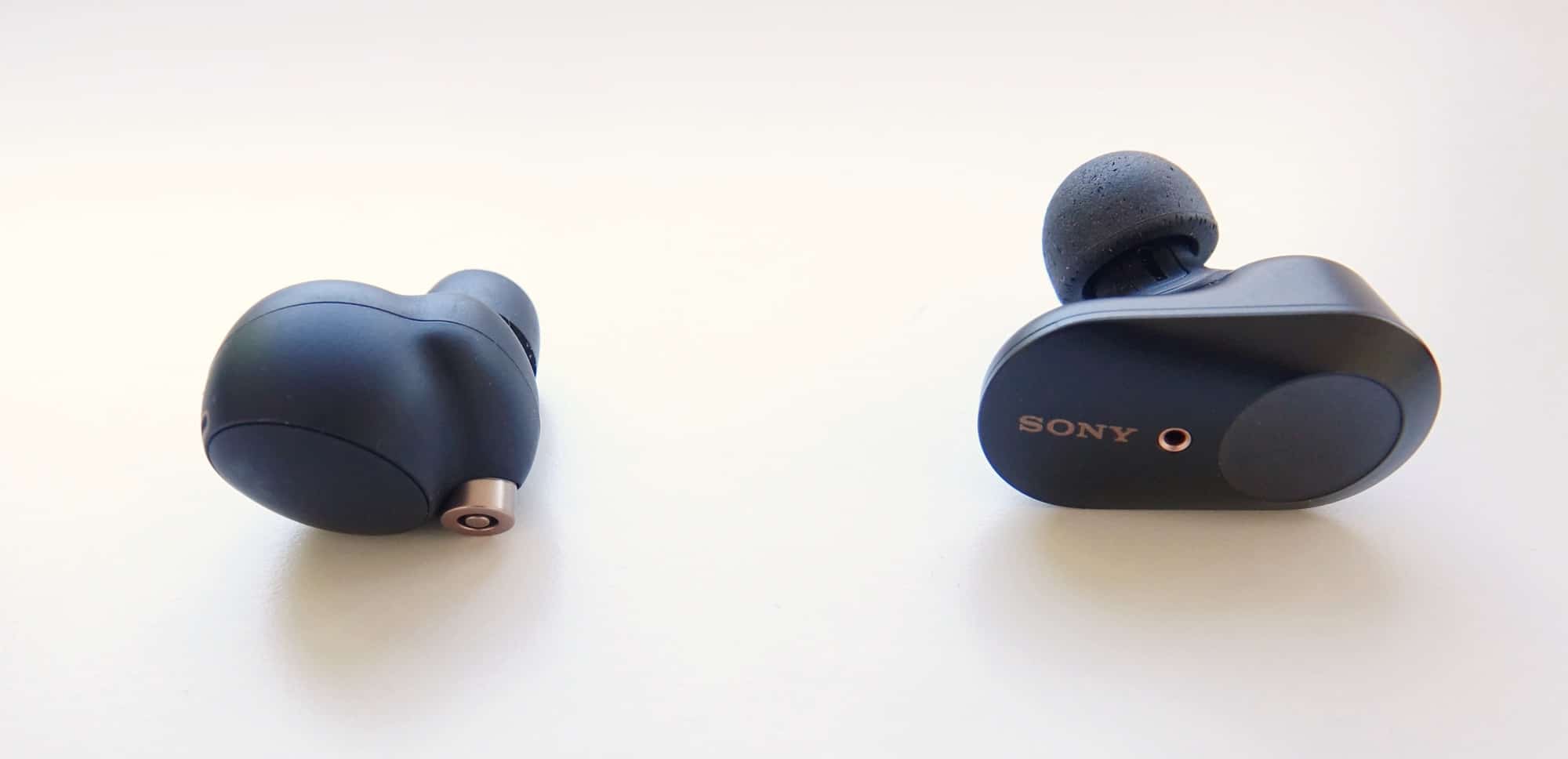
Battery
Battery is another obvious win, delivering not so much a noticeable improvement, but more a continuation on the solid performance we saw before.
Back in 2019, Sony’s WF-1000XM3 scored an impressive six hours with cancellation and eight when off, with a total of 24 hours in the case with cancellation and 32 without.
Two years later, Sony isn’t concerned about switching cancellation off, but has kept the battery life at 24 hours all up, and updated the ways you can charge the earphones overall. As such, you’ll find eight hours of charge in each ear piece with cancellation, and 16 hours in the case, keeping it to the 24 expectation from last time.
The case is also smaller, which is a win for us given the large size of the XM3 was a touch frustrating, and Sony has also included wireless charging over the Qi standard. That’s good news if you have a wireless charge pad, and handy if your phone supports reverse wireless charging, too.
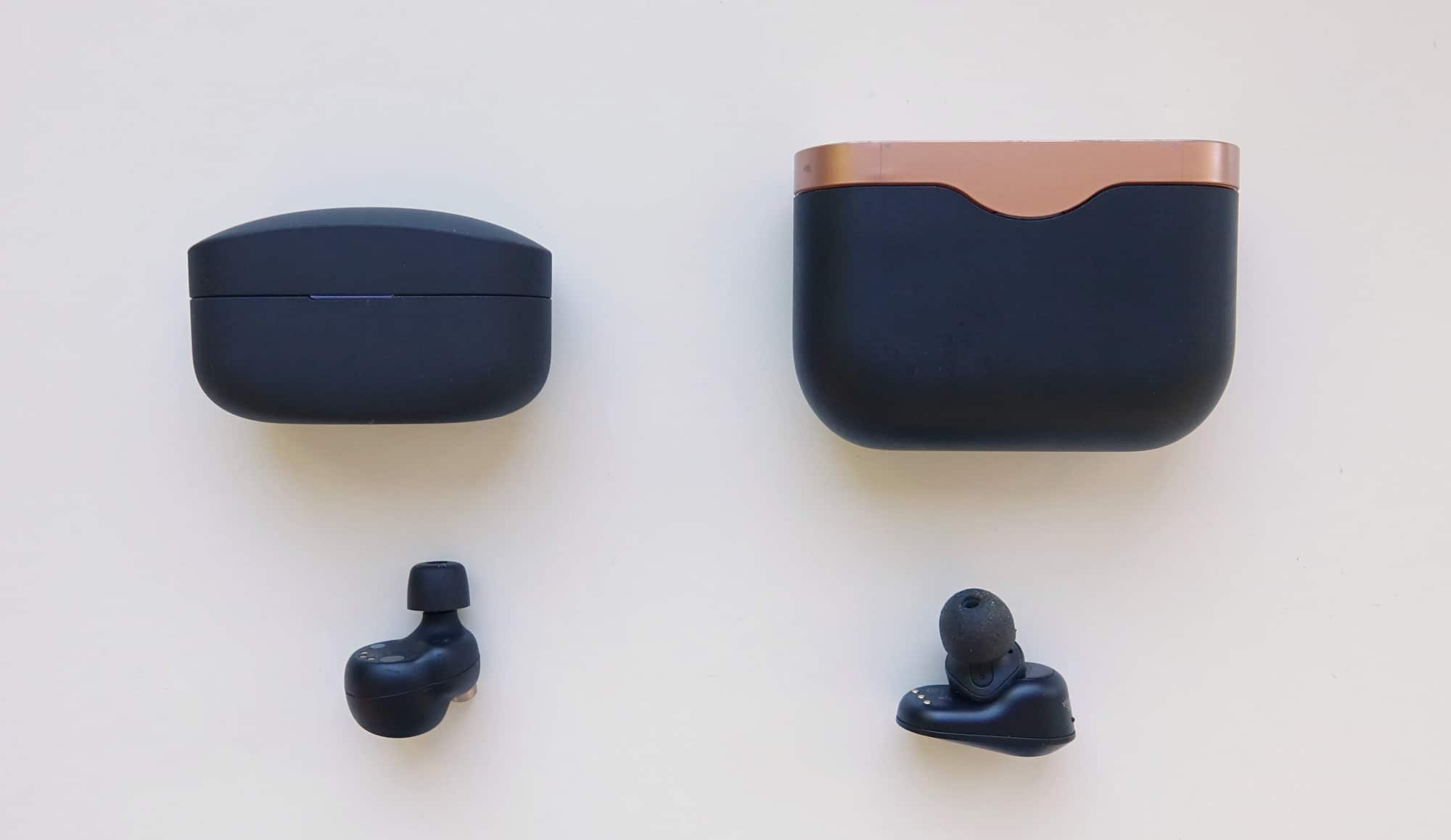
Value
Price-wise, though, Sony hasn’t ventured too far from what we’re used to with the earphones, though, keeping the recommended retail price up where noise cancelling earphones often sit.
At $449.95 in Australia, the WF-1000XM4 are not what we’d call an inexpensive pair of earphones, but given both its predecessor rank as some of the best, the near-$500 price isn’t a total surprise.
Technically, the XM4 is $50 more expensive than what we saw in 2019’s XM3 earphones, and also $50 more than Apple’s AirPods Pro. They’re also $50 more than the $400 Bose QuietComfort Earbuds, making them more costly than most of the other noise cancelling earphones.
Sony’s headphones tend to have a reputation for seeing street prices below RRP pretty quickly, so we imagine these will be much the same a month or two after release.
What needs work?
We’d call the value worth it, mind you, since they’re a pretty solid update all the same. With upgrades in pretty much every department, the Sony WF-1000XM4 is a serious improvement. Call it “The Bionic Earpiece”, because like TV’s Bionic Man, it’s smaller, more durable, and better in just about every way.
But it’s not perfect, and there are things we’re not sure are quite ready. Things like Sony’s “Speak-to-Talk” function remain one of them, which stops your music if you’re talking to some one — because that’s the point — but also stops it if you’ve decided to sing to the music. It means if you’re a singer, best turn the feature off, otherwise your music is going to regularly pause on you.
While Sony included that feature from the over-ear XM4 equivalent, it seems to have skipped out on multipoint, which is missing in action here. It means you can’t link the XM4 earphones to two devices wirelessly, something that was supported in-app with the bigger headphones.
You can, of course, pair these earphones with more than one device, and using the Bluetooth settings you can disconnect and reconnect, but that’s not really multipoint. Simply, we’re not entirely sure why Sony ignored multiple concurrent Bluetooth connections here, but if you have a need to connect earphones to more than one device at once, these may not well do it. At least until Sony reads this and maybe issues a firmware upgrade.
The WF-1000XM4 earphones are also nicely designed we found, but they mightn’t suit all ears. Even though the tips are better at forming a seal, there were times where we’d need to wiggle the right earphone to get the best seal, and you’ll definitely want to spend time applying the right tips.
Sufficed to say, the design of the XM4 earphones is such that while it might work for many ears — and Sony says it has scanned quite a few to get it right — it also might still be too bulbous for yours.
What we loved about the Sony WF-1000XM4: the ambient mode
While there are a few things that need adjustment in the XM4, there’s one thing this reviewer absolutely fell in love with, and it came at a time I didn’t expect.
I was walking home one afternoon during the WF-1000XM4 review period, and it was dark and had begun to rain. I had been fiddling with the noise cancellation trying to get the best seal in my right ear, and just decided to listen to the rain and my music. Noise cancellation wasn’t going to do it at that time.
Etta James came on from the Pickr Sound Test, and so I opened the earphones up in ambient mode, tapping the left earphone to switch the modes. And with that, I could hear it all with my music, my sounds. The pitter-patter of raindrops falling on my head, the slight wind, and the sound of cars driving down a wet street rang in my ears alongside music at a comfortable volume; it was as if nothing had changed, and I was listening to the sound of the outside world at the same volume my ears normally hear it at, except with music feeding in.
It was perfect. It was a personal soundtrack with life bleeding through. Sony’s ambient transparency mode didn’t do what we normally hear from these modes, amping up the volume slightly as the outside microphones switch on. Rather, it delivered the world at the same volume our ears play them, and that’s rare.
Sony may well have the best ambient mode ever in the WF-1000XM4, and that means you can listen to your music and podcasts, and still hear everything else. We’ll call that a win.
Final thoughts (TLDR)
Better in nearly every way, the Sony WF-1000XM4 are the upgrade we needed. These are as excellent as we expected and then some.
The sound is amazing, the tech is excellent, and Sony has crafted a winner. The fit can be tricky depending on what your ears are like, but once you find the sweet spot, you won’t go back. They may well be the new in-ear benchmark.
We’d honestly be shocked if Sony didn’t make the WF-1000XM4 as good as its predecessor, but you needn’t worry, because these are better. Better in just about every way. Highly recommended.



